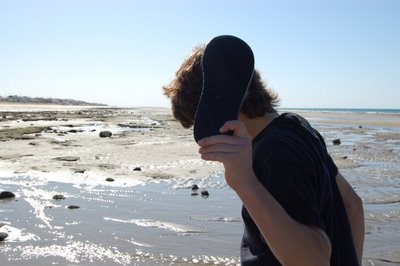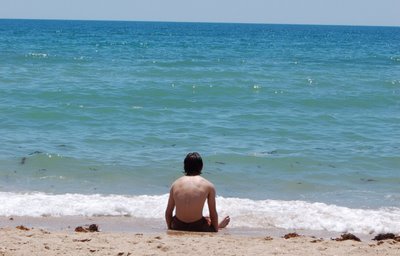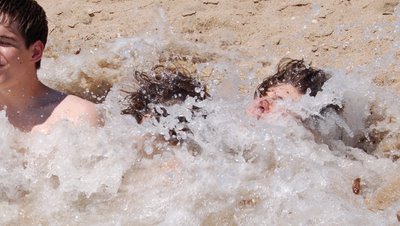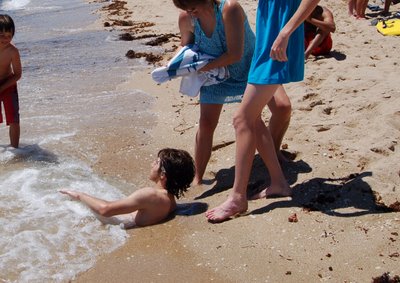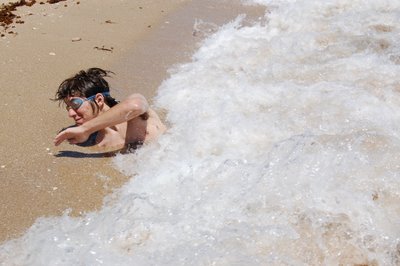Capt. Preston Stewart Krecker didn’t have time to despair over the decision he was about to make. As he clung to the rail of the slippery deck of the USAT Dorchester, surrounded by ammonia fumes, ice and chaos, he looked below at a mass of wild-eyed soldiers clinging for life to the ropes beneath the ship’s port side lifeboats.
Frozen sea spray off the wintry Greenland coast had jammed the lifeboats’ mechanisms and several men risked their lives to release them. Precious few moments were left before the angle of the listing ship would make it impossible to drop the boats into the sea. But, if Capt. Krecker ordered the lifeboats dropped, they would scrape all of the men clinging precariously beneath them into the icy waters below. These men might not survive the trauma. With the starboard lifeboats shattered by the torpedo blast, if he didn’t order these boats dropped, no one would survive.
The path that brought Capt. Krecker, lauded as one of the top bonds salesmen on Wall Street in 1941, to this tragic decision is a tale of romance, family, honor, courage and faith.
Born in Brooklyn, NY in 1905 the only son of Preston Stuart Krecker, Sr., and Margeurite Madden Krecker, Preston was raised by an extraordinary woman.
A devout Catholic, Margeurite pioneered the women’s political movement in New York City following the lead of Susan B. Anthony. With her fellow suffragettes, she boldly battled indifferent men and apathetic women, who were much too frazzled by their daily lives to care about voting.
The young Preston’s brilliant smile, thick blond hair and musical talent made him the poster child of New York’s suffragette movement. He appeared on magazine covers, carried signs at rallies, marched with his mother in parades and played piano for meetings of the Women’s Democratic Forum, which Margeurite founded.
Tragically, Margeurite died from pneumonia in 1922 when Preston was just 17. Deeply shocked and saddened by his young mother’s sudden death, he stopped attending Catholic Mass and, by all accounts, lost his faith.
Six months later, Preston entered Princeton University. Out of a profound desire to serve his country, culled from both his mother’s and father’s sense of civic duty, in 1923 Preston joined the R.O.T.C.
At Princeton, Preston befriended fellow student Jimmy Clunan and often visited the Clunan family during school breaks becoming especially close to his friend’s father, John Clunan, and eventually falling in love with Jimmy’s sister, the slender and vivacious Katherine Clunan.
After graduation, Preston continued his military service, and was appointed an officer in the U.S. Army Reserves. He married Katherine in March 1927 in a small Catholic ceremony out of deference to her devout faith.
The young couple, whose love affair continued throughout their marriage, moved several times, finally settling in New Jersey, and had four children: Pat, Gwen, and two twin boys, Richard and John – who looked so much alike they often, and purposefully, confused family and friends. Preston’s winning smile served him well in business as he quickly became a successful bonds trader on Wall Street.
In March 1942, as war rumbled through Europe, Preston left Wall Street for the Army and was commissioned as an intelligence officer. Though the work allowed him to remain near his beloved family, Preston wanted most to serve his country in war. When the Army attempted to transfer him to a post in Trinidad in an intelligence unit, Preston requested instead transfer to a field artillery unit.
In December of 1942, shortly after the attacks on Pearl Harbor, Colonel James Mott gave Preston command of an army unit of 500 men scheduled to depart on a merchant marine vessel, the USAT Dorchester, to reinforce the army’s Greenland base station and set up an outpost to gather intelligence on German activity amid the bloody Battle of the Atlantic.
Early on the morning of Jan. 5, 1943, young Richard woke early to peek out of his bedroom window and see his father for the last time as Preston walked hand-in-hand with his wife to attend Mass, the only time he had been to a church since his wedding day.
Preston left directly from the church to meet his troops in Massachusetts finding among them a sergeant who had served under him before. “He was tickled to see me as I was him,” Preston wrote to his wife. “Now all I need to do is tell him what orders I want issued and then I can relax.”
As tales of the brutal Battle of the Atlantic stirred fearful rumors along the North American coast, three Christian ministers – from the Methodist, Catholic and Dutch Reformed denominations – and a Jewish rabbi joined the troops to serve as Army chaplains. They immediately began forming powerful bonds with the men, including the faithless Capt. Krecker. They also quickly bonded to each other, as one soldier described, “They were always together, they carried their faith together.”
Preston remembered his father-in-law’s stories of a childhood set in an era of intense religious discrimination – stories of burning crosses on the family’s lawn and of boys beat bloody on their way to school for the mere fault of being Catholic. Like many, he was amazed by the chaplains’ friendship, and wrote to his father-in-law of them and of his own growing friendship with the Catholic chaplain from New Jersey, Fr. John Washington.
Along with the soldiers and their four chaplains, a Naval gunnery crew and a contingent of merchant marines lead by the ship’s captain, Master Hans Danielsen, the USAT Dorchester set sail on Jan. 22, 1942, traveling with a large convoy of ships on calm seas. The ship stopped in St. John, Newfoundland to pick up additional supplies and travelers, then headed out again, breaking away from the convoy with two freighters and just three Coast Guard cutters for protection. On this leg of the journey, the tempestuous North Atlantic seas threatened to crumple the tiny Coast Guard vessels as they escorted the Dorchester to Bluie West, Greenland.
At approximately 3 p.m. on Feb. 2, 1943 one of the ship’s Coast Guard escorts signaled to the Dorchester that an enemy submarine lurked in the vicinity. Lt. William Arpaia immediately ordered his Naval gunnery crew to their battle stations. Capt. Krecker ordered his night watch of 17 men doubled to 34, and ordered his remaining men to sleep fully clothed and with life jackets on. The ship’s lights were blacked out, and the men began a vigilant watch across the water.
Master Danielson confidently told Lt. Arpaia and Capt. Krecker that if the ship wasn’t torpedoed by midnight when they would reach the Arctic icepack, they had no more to fear. Once they were in the iceberg-riddled waters off the Greenland coast, he believed the German submarines could not maneuver and strike them. And so, fifteen minutes after a calm and moonless midnight, as the ship slipped quietly into the icepack, Lt. Arpaia and Capt. Krecker retired to their staterooms, but warily ordered their men to stay on watch. A wintry cloud cover blocked the stars; the night went icy black.
No one saw the torpedo, but everyone felt its tremendous impact when it slammed into the forward of the beam on the starboard side at 12:55 a.m., and exploded into the refrigeration system, destroying the engine and electrical systems, and spewing ammonia.
Sleeping men, many who had ignored Capt. Krecker’s order to wear their clothes and life jackets, were hurled out of their bunks and the ship immediately began to list wildly to her starboard side.
On deck, pandemonium raged, as terrified, half-naked men scrambled for safety in the dark leaving their life jackets behind in their bunks. No one knows which of the chaplains gave up their life jackets first, but in the end, all four did knowing that without a life jacket no one could survive the frigid Arctic water.
Capt. Krecker and his men had done everything they could to free the few remaining lifeboats and to encourage the soldiers clinging below them on the ship’s port side ropes to jump into the water. Terrified of the icy sea, the soldiers refused to budge. After exchanging a hollow-eyed look with his loyal sergeant, Capt. Krecker issued the order to drop the remaining boats. They tumbled down the side of the ship, soldiers screaming as they were knocked off the ropes, but as soon as the boats were in the water, men began climbing in to safety.
The sound of collapsing metal signaled the ship’s ultimate demise.
There were still many men on board, all terrified of the frigid water. Preston raced among them, using the same winning smile and positive nature he’d once used when selling bonds to encourage the men to dive into the water, find a raft, an ice chunk, anything – this, their only hope for survival.
As the ship creaked and listed, and freezing waves began to sweep over the remaining men, through eyes blurred by tears and frozen air, Preston saw Fr. Washington and the other three chaplains gather, linking their arms and raising their voices to the sky in prayer.
Their voices lifted him, he knew their prayers would carry across the moonless night and cheer those men still clinging to life, just as they had cheered and comforted the men throughout the journey, and maybe some of them would survive. He could now see around him a sea dotted with red blinking lights, the sign that many men had made it into the water alive and had lit up the red lights on their life jackets so the Coast Guard cutters escorting the Dorchester could find and rescue them in the night.
Only then, just 18 minutes after the torpedo strike, did Preston understand that, in the tradition of commanding officers at sea, he would go down with the ship. The prayers of the chaplains rang in his ear and he, too, began to pray. He saw his precious Katherine’s warm face, generous smile and tender shoulders, hovering before him as though she were right there in the night, and gathered around her, he saw his brilliant daughter Pat, his beautiful Gwen, so much like Katherine, and his impish twin boys as the waters closed around his head and the ship’s swell drew him underneath the water into icy blackness.
****
Note: This account of the sinking of the USAT Dorchester, one of the worst naval disasters of World War II, and the death of my grandfather is based on numerous historical documents including: family documents and letters; survivor accounts; interviews; the official military report; and contemporaneous newspaper and magazine articles. Many of these documents present competing views of exactly what happened in the early morning hours of Feb. 3, 1943. I’ve attempted in this story to make plausible sense of the final hours of the USAT Dorchester as my grandfather might have experienced them, but I do not pretend to have captured every historical detail of this momentous event. If you would like to receive a copy of my bibliography for this story, please leave a comment with your e-mail address.
Everything written here is based on historical evidence, however, because there were so few survivors, no one can know exactly what Capt. Krecker might have seen or thought during the final moments of his life. That portion of my account is based on my family’s knowledge of Capt. Krecker’s character and supported by family records and survivor accounts, including a documented account from survivor Lt. William Arpaia.
The Immortal Chaplains Foundation was established to perpetuate the legacy of the Four Chaplains’ friendship, faith and heroic sacrifice. To learn more, visit their web site.
To learn more about the courageous Coast Guardsmen who rescued the survivors of the sinking of the USAT Dorchester, see the account written by Gary Turbak for VFW magazine and reprinted by the USCG Reservist.World War II Four Chaplains heroism faith honor courage Memorial Day Patriotism narrative non-fiction writing
 (Ronald Martinez/NBAE Photos)
(Ronald Martinez/NBAE Photos)


